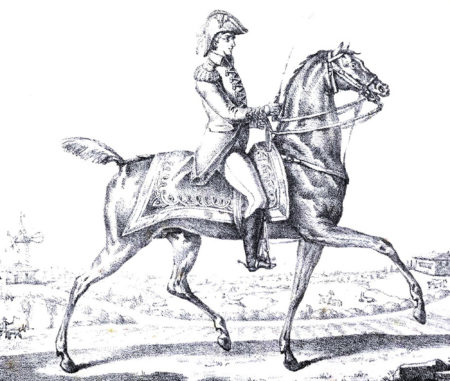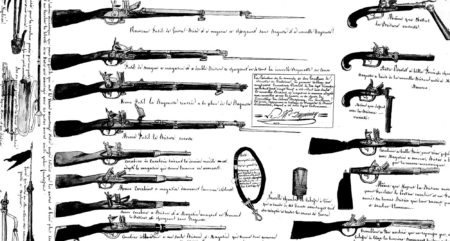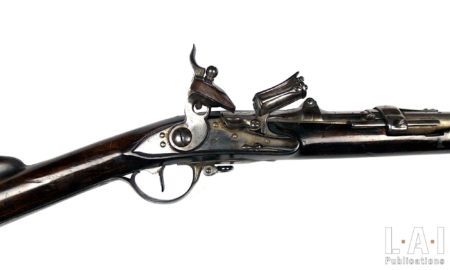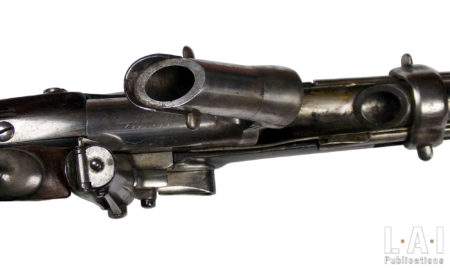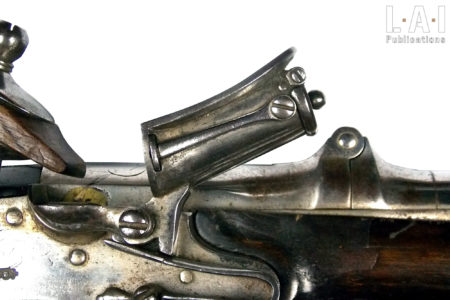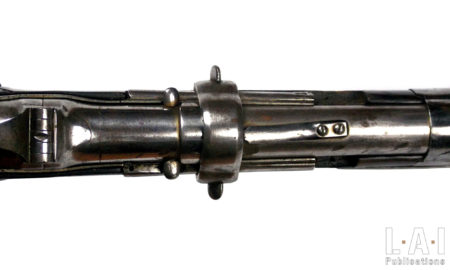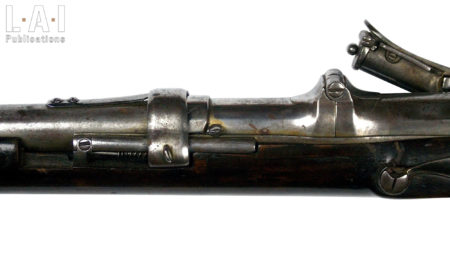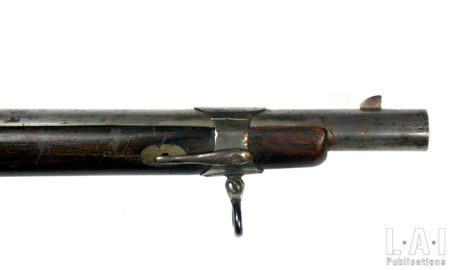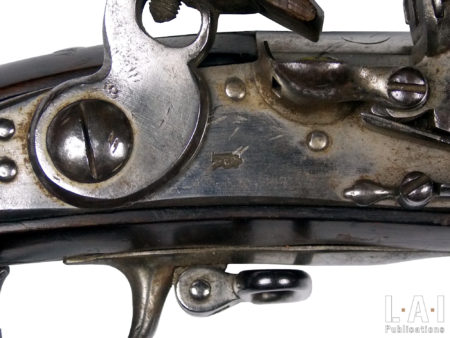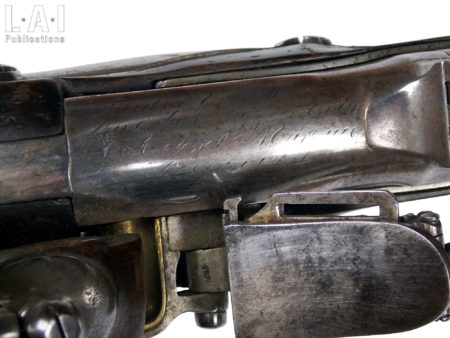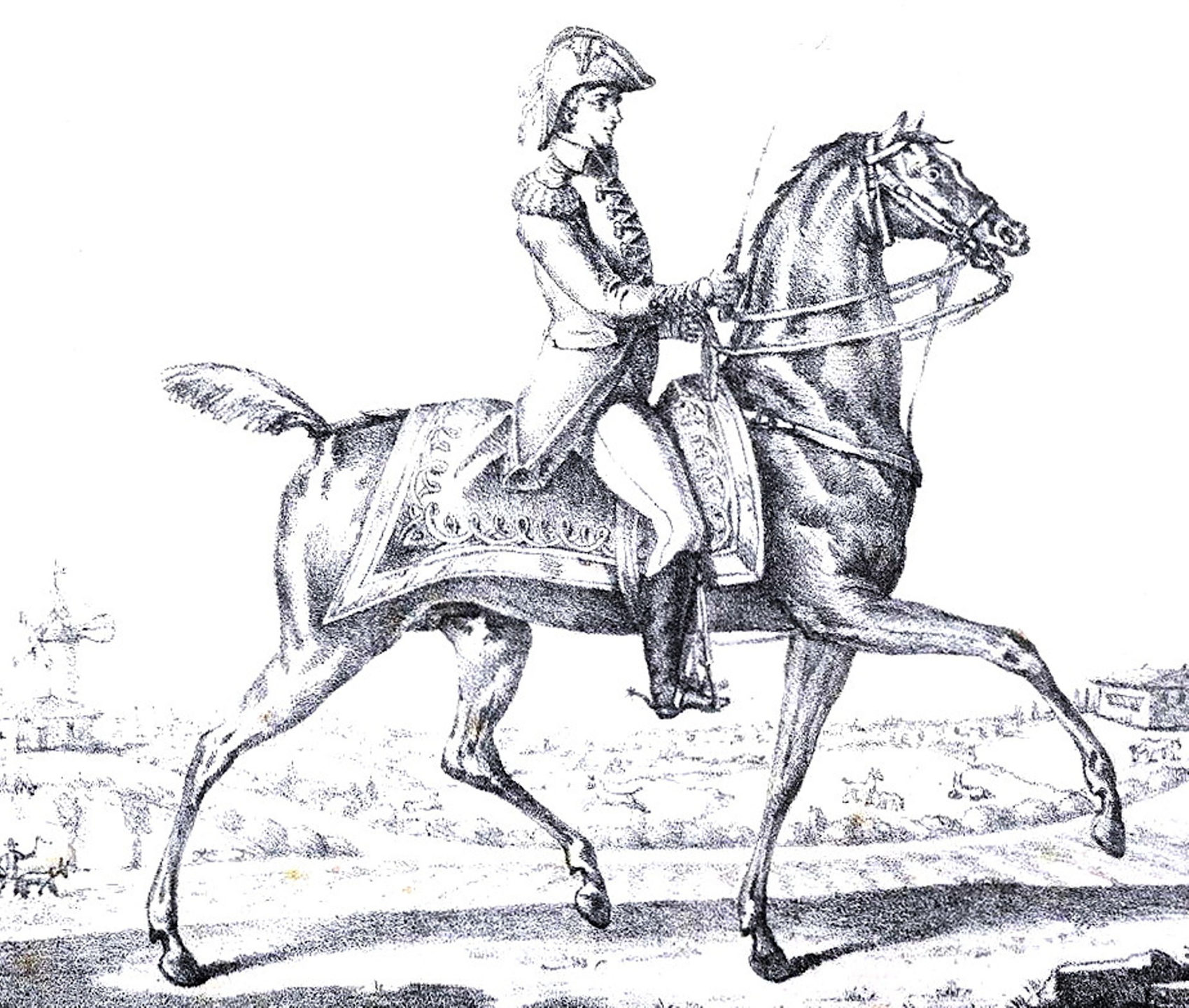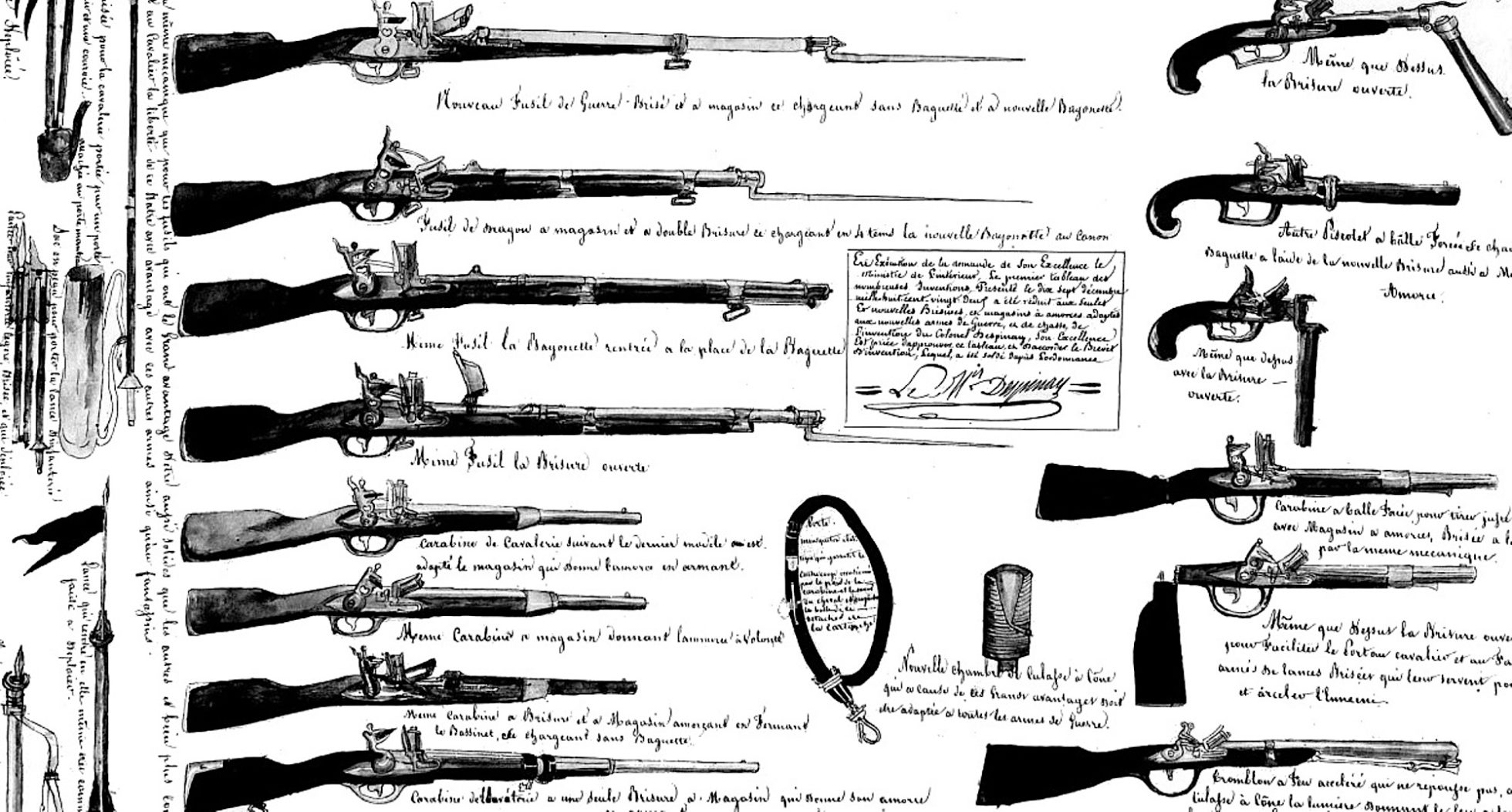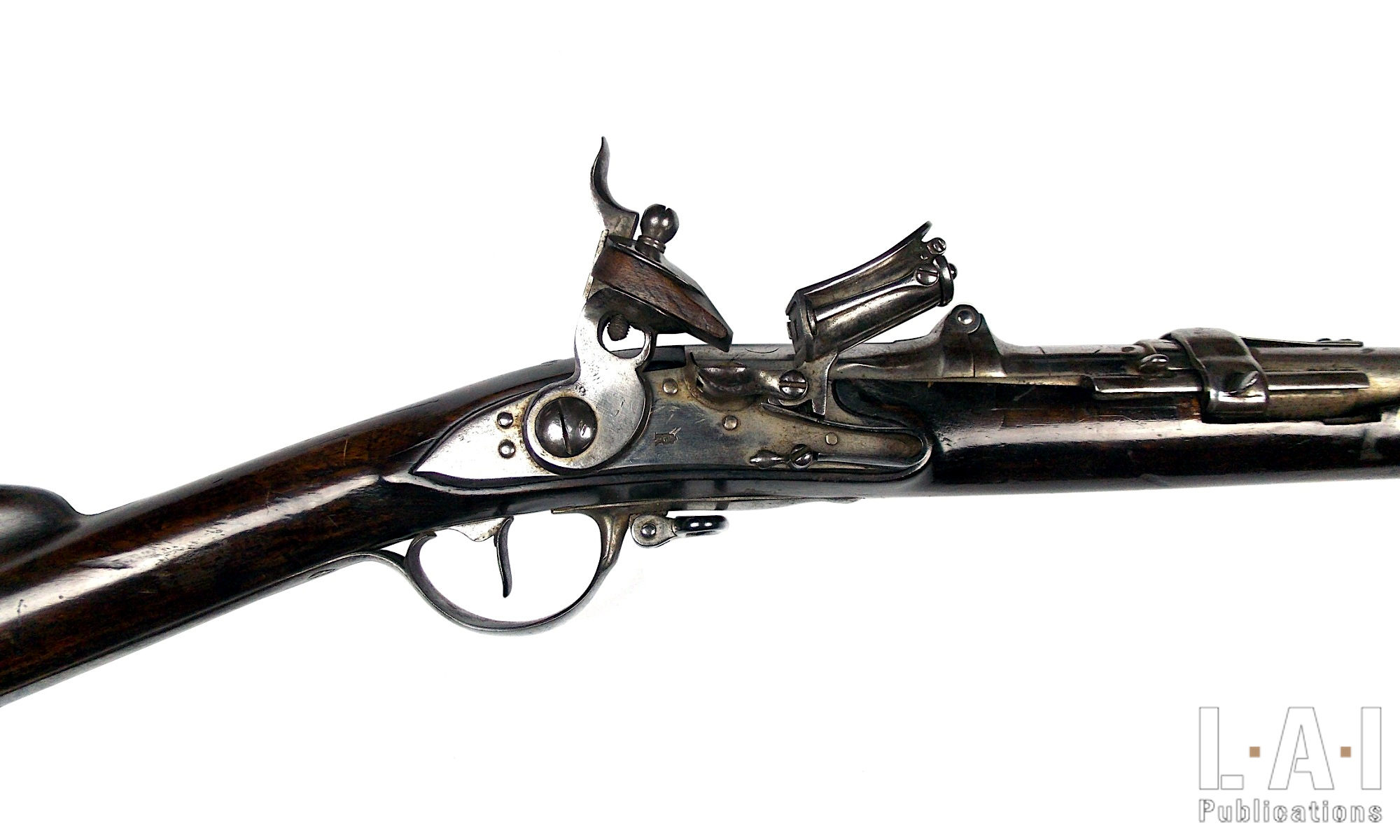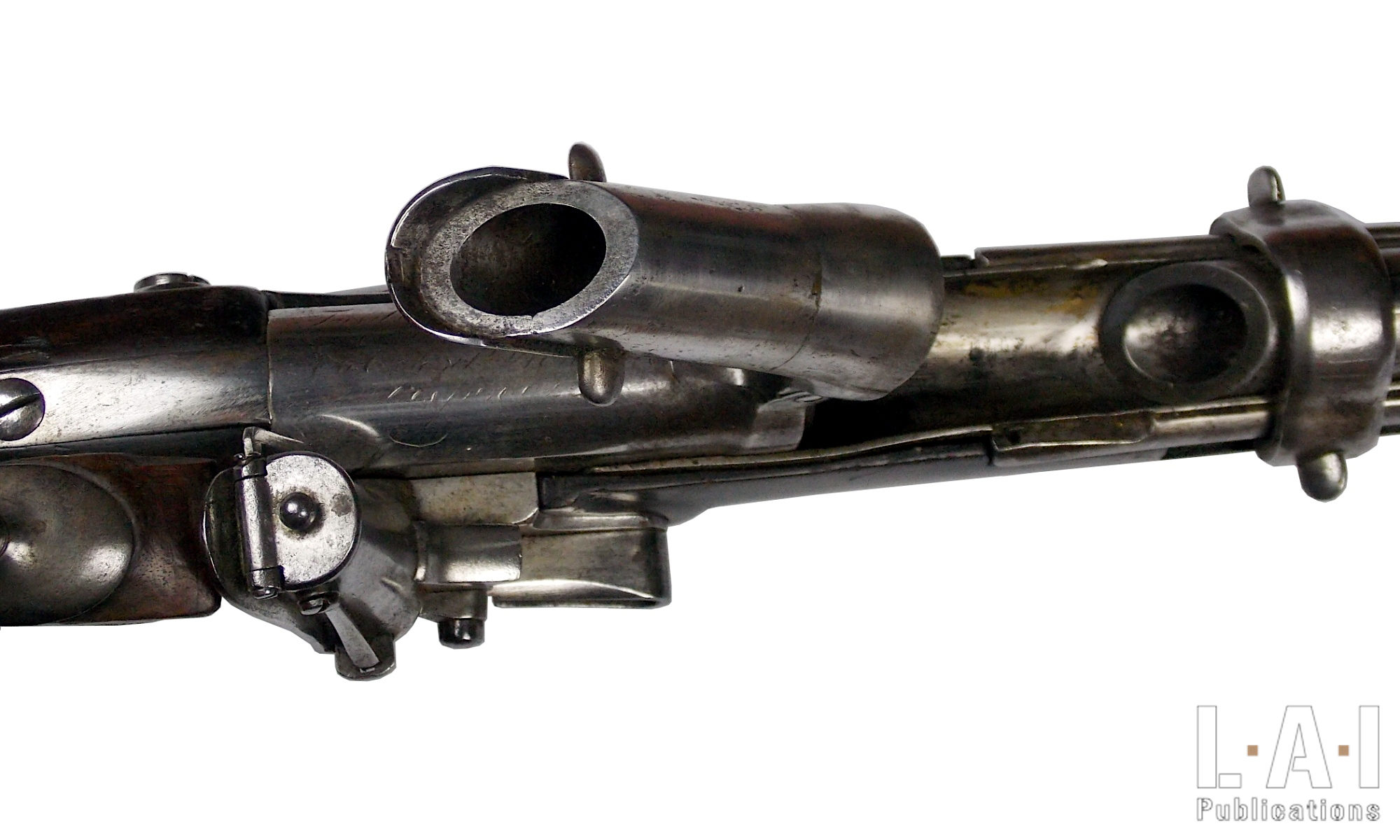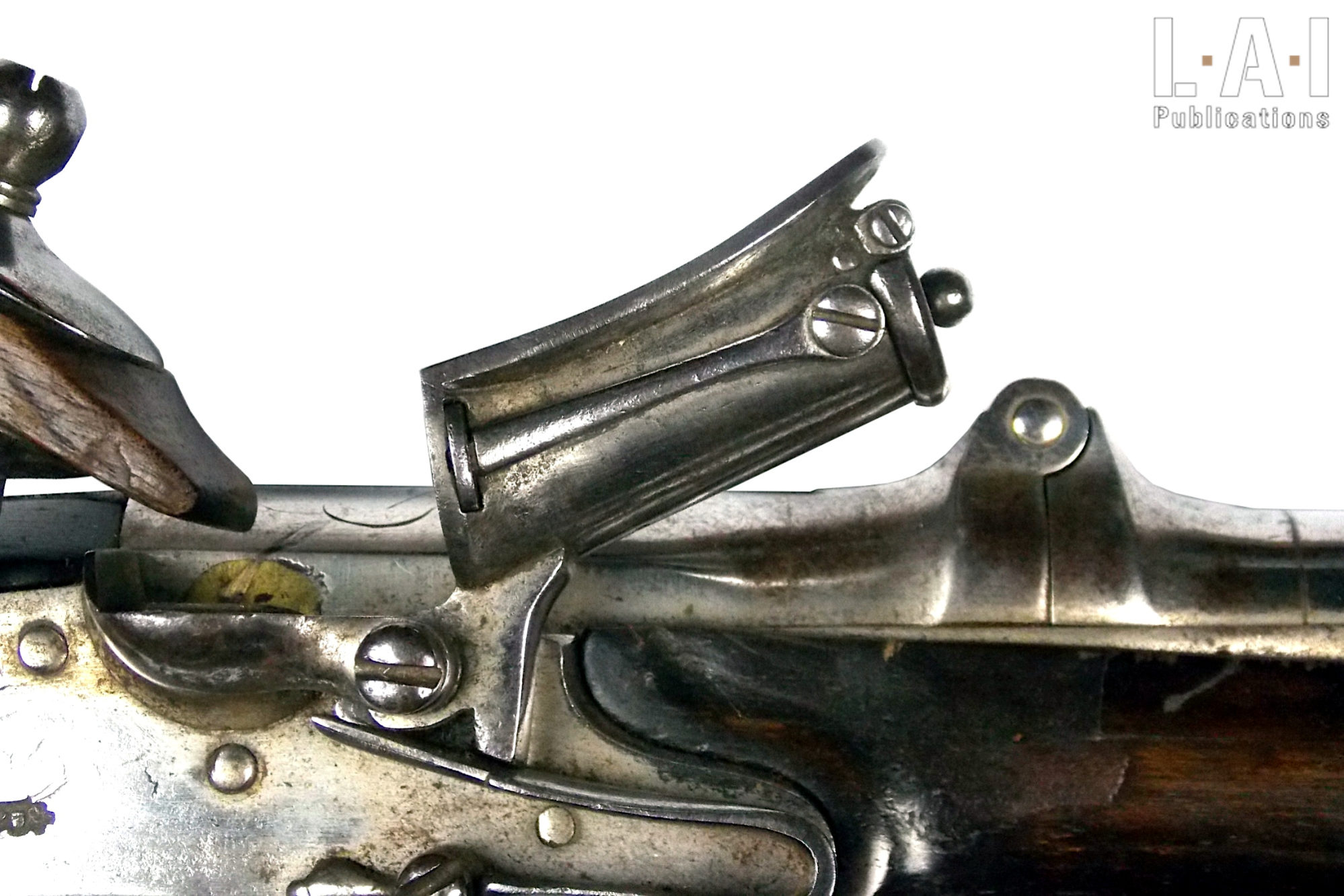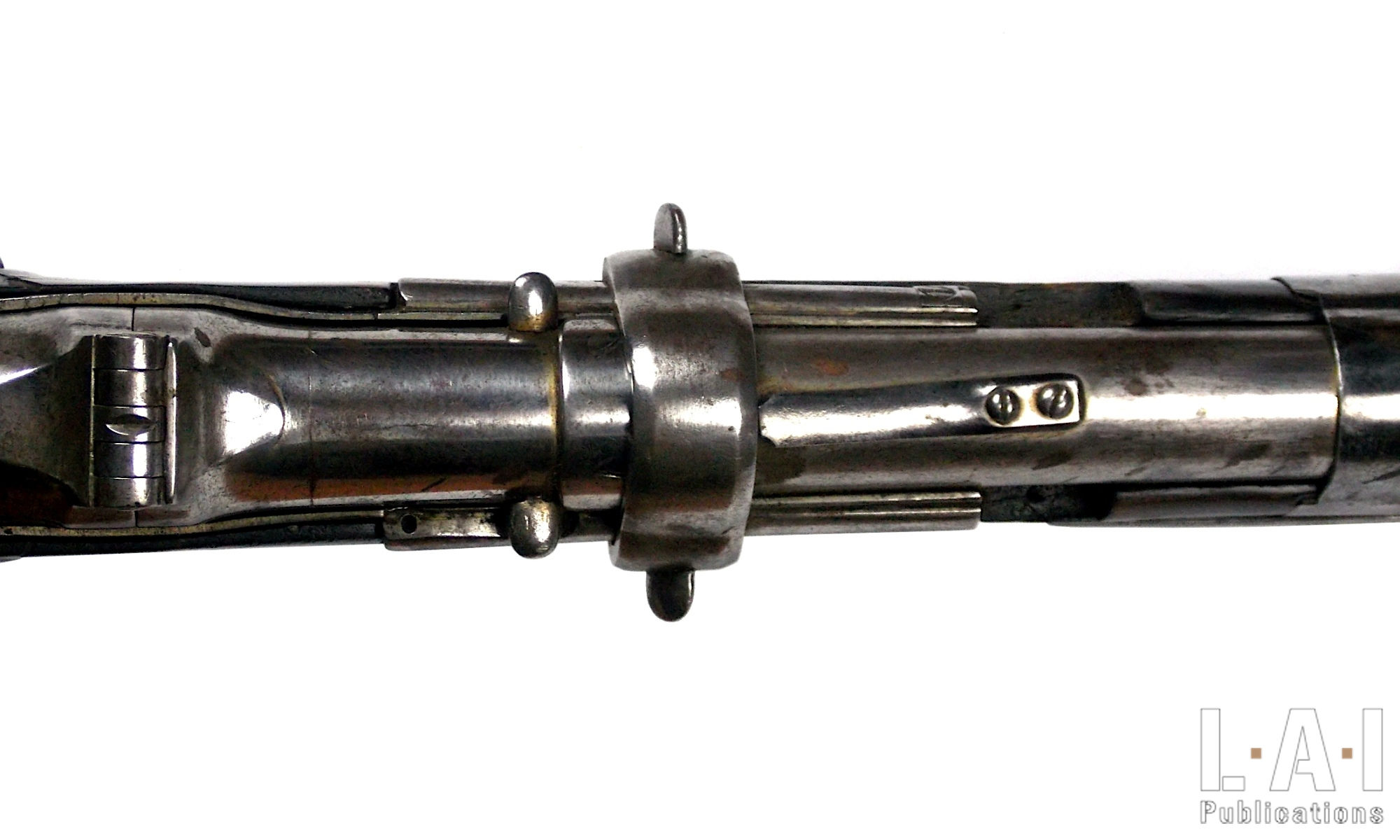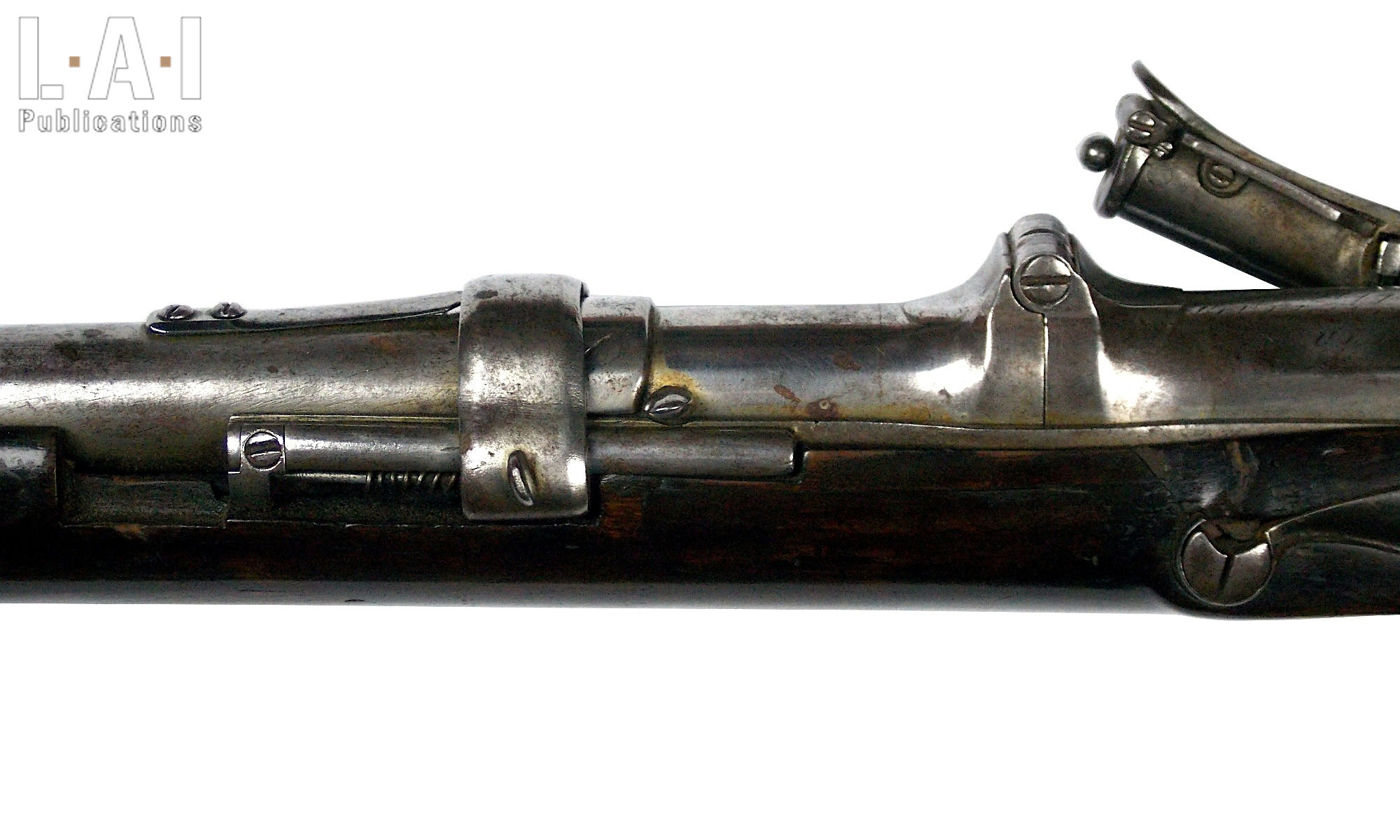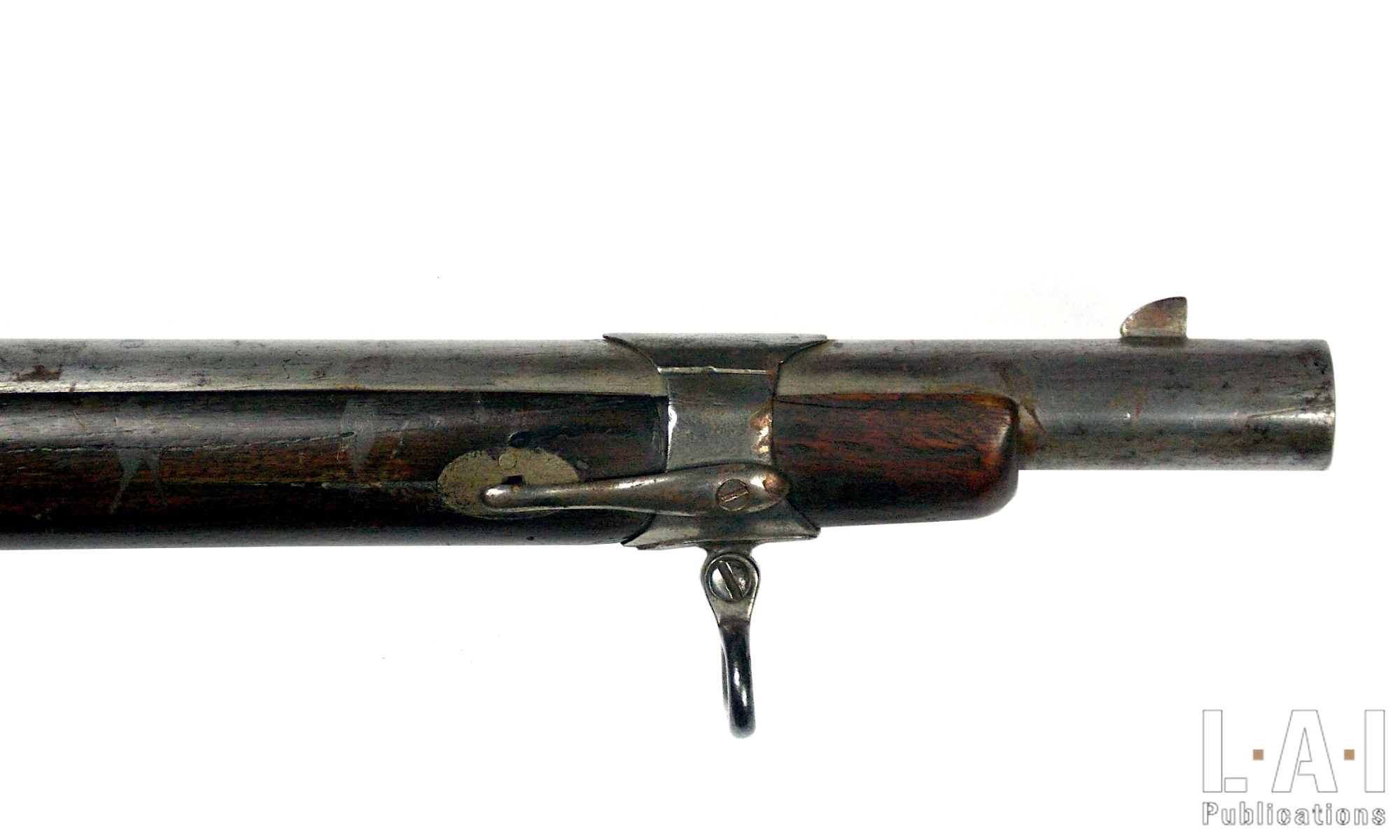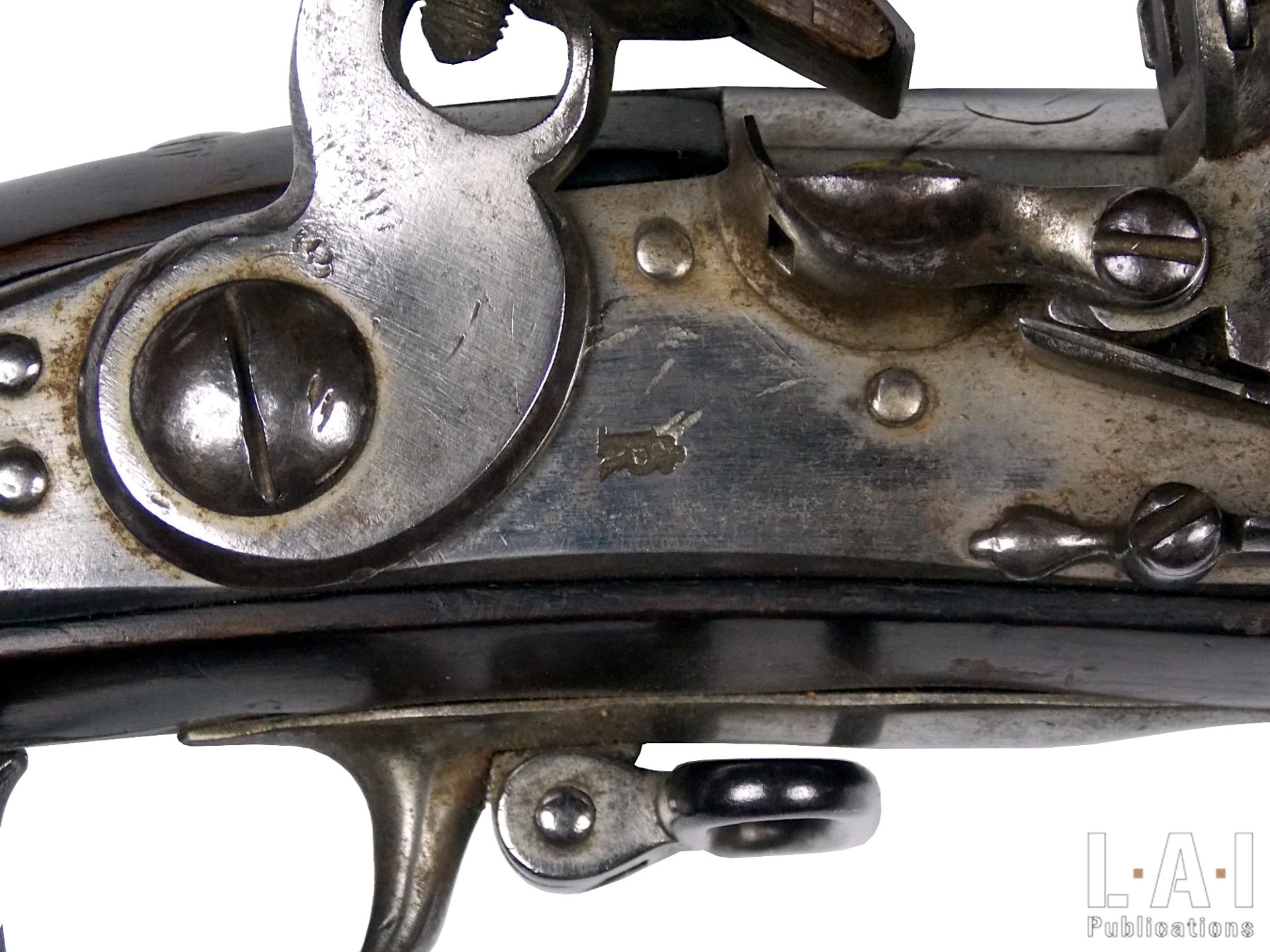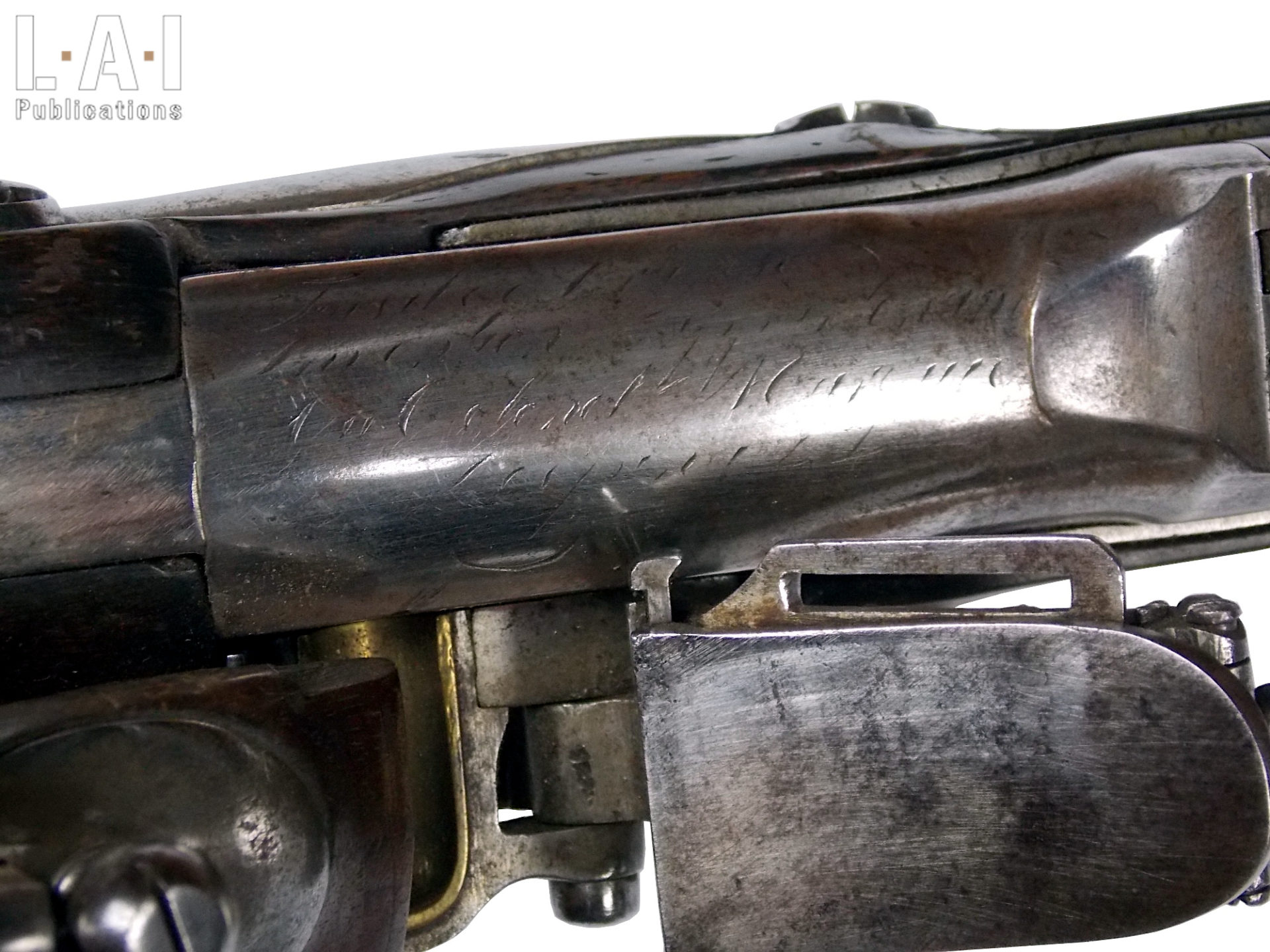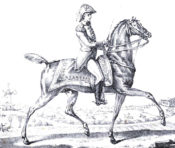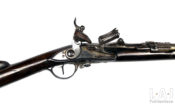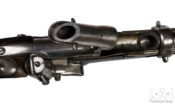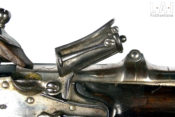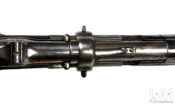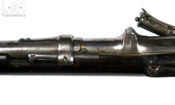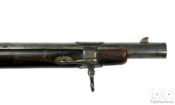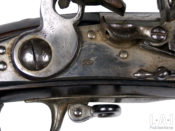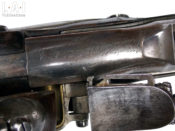The amazing d’Espinay Musketoon

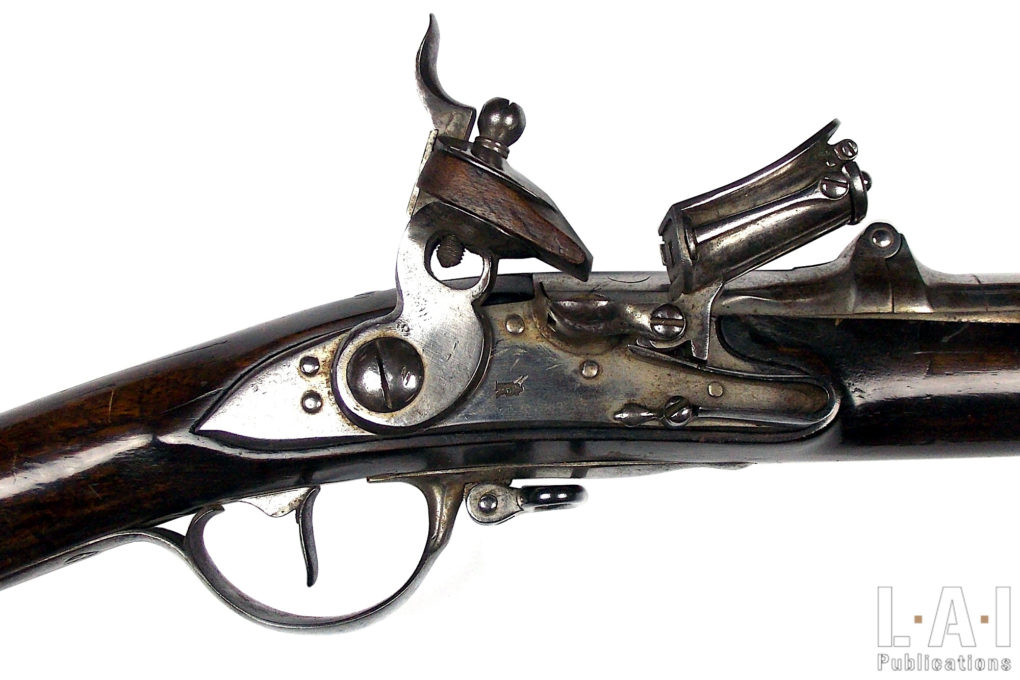
In 1827, Paris hosted the Louvre’s exhibition of French industrial products. This exhibition, commissioned by Charles X, hosted 1,631 exhibitors. The sections of arms and French gunsmithing gathered all the big names of the armory: Prélate, Renette, Cessier and Lepage, but also some newcomers like the Marquis Pierre-Marie d’Espinay who exhibited for the first time his hinged guns, patented five years earlier.
It was in the fifteenth room, under the number 1116, that appeared the trophy of arms of Colonel Marquis d’Espinay St-Denis. This was not the man’s first try. He had already presented ambitious projects such as a floating citadel and an incendiary galley, both intended to escort merchant ships to protect them from attacks by privateers. But also “arrow-mortars” and rear-loading guns.
These weapons attracted the attention of the King, princes and ministers, especially from the Navy, which examined them in great detail. They “will be of great use to our troops on land and sea.” At least that’s what the Marshal-Duke of Bellune, who authorized the inventor to have them made at the royal factory of Saint-Étienne.
But the ingenious Marquis preferred to have them executed at his expense to obtain a patent for invention and place them in the Louvre among the other products of the industry.
The Marquis d’Espinay
Knight of the Royal and Military Order of Saint-Louis, Saint-Jean de Jérusalem, Saint-Maurice and Saint-Lazare, Marquis Pierre-Marie d’Espinay is Colonel on non-active status in the army staff. He was born in Lyon on November 22nd, 1764. On August 26th, 1826, during a stay in Paris, he obtained by royal decree the authorization to add to his name that of Saint-Denis worn by his father, which he himself bore, and under which he is known and designated in the world and in the army.
Dilettante, curious about everything, he was involved in many activities including the creation of experimental farms or stud farms for the improvement of the horse breed.
He wrote, published books and memoirs and on the December 17th, 1822, at the age of 58, he filed a five-year patent for invention and improvement, for a hinge-opened system adapting to all kinds of firearms. His arms were then presented to the Duke of Angoulême who received the Marquis in a private audience and directed him to the Minister of War.
On the recommendation of the minister, eleven of his weapons were tested on August 2nd, 1823, at Saint-Étienne. They combined several valuable advantages for cavalry and infantry. The fire-rate is fast, the primer is not subject to moisture and requires less powder than ordinary rifles. Colonel d’Espinay personally participated in the tests and fired forty-two shots without cleaning his weapon, to prove that the fouling generated by the powder did not in any way harm the mechanism of his inventions.
A never-ending story
For the filing of his first patent, the generous Marquis thought big, probably too big since his plethoric memoir which presents dozens of weapons and accessories was rejected by the Ministry of the Interior. He had to reduce it to have it registered.
A year later, on December 3rd, 1823, it was finally registered as No. 2,251. In the meantime, he had carried out new tests and reduced to a small forty the number of his proposals, among which were such surprising things as an “anautiques” (T.N. Old French meaning unsinkable) shield and cuirass, lined with cork, to allow soldiers and horses to cross rivers without risk of drowning, chained-shots, a telescopic lance called “lance fantassine brisée”, a helmet, blunderbuss. But the most interesting in this long inventory is its barrel-break weapon system, meaning breech-loading, complemented by a priming load distributor integrated into the battery.
Let the inventor present his system:
“This invention consists in breaking the barrel of a firearm by a hinge adapted to a spring with cover, to join and consolidate the breaks of the barrels of war and hunting rifles, rifles, pistols and even spears, in order, in some of these weapons, to load without rods, and in others to load with a small rod, which is worn at the harness. Sometimes the hinged break is placed at the birth of the butt, to help the rider to carry the weapon.
In addition to this hinged break, these various weapons are equipped with a powder magazine containing ten and twenty priming loads, both those intended for war and those for hunting use, by means of which the weapon can primer on its own; This accelerates the fire-rate of the cavalry and infantry.
A battery to carry the fulminant powder primer on the covered flash-pan, so that rain cannot enter the flash-hole. This flash-pan only opens when the hammer falls.”
As extravagant as they were, his inventions met with a most favorable echo in the press of the time. In its edition of Friday January 11th, 1828, Le Figaro published:
“The inventions of the author (Colonel Despinay, arms manufacturer) are excellent. Witness, this new rifle intended for MM. The bodyguards, which loads in four actions instead of twelve, without rod, without having to tear the cartridge (which does not spoil the teeth), and which can fire in the darkest night”.
His weapons were designed in his castle of Saint-Georges de-Reneins, near the Rhône, according to a few fairly simple principles: prevent the bullet from falling out of the barrel, facilitate loading by the breech, avoid priming with each shot, exempt the shooter from tearing the cartridge and bind the hammer and the battery of the rifle together.
The Musketoon
This cavalry musketoon from the patent of December 3rd, 1823, is equipped with a lifting breech, cut bevel and locked at the front by an opened ring, sliding into two metal pieces inserted into the barrel.
By sliding the ring forward, the breech is released which is raised under the action of a spring placed under the mobile chamber. Once the cartridge is inserted, push the breech down and bring the ring back to lock the chamber.
On this weapon, a link connects the hammer to the battery which contains the priming reserve. By pulling back the lever that surmounts the hammer, we lower the battery and cock the hammer. At the same time, the primer reserve deposits a priming load in the flash-pan. This arrangement is made possible because the flap of the priming powder reserve is opened when the battery is set up: it will close when the hammer tilts the battery. You then only have to is to fire, praying that the iron ring will resist the ignition of the charge and that the primer holder will not turn into a grenade.
Markings
They are few and far between. The side-plate bears as its only marking a hallmark with a crowned “R” and the barrel is engraved with an inscription that recalls the name and title of the inventor.
A pistol
The Marquis did not only manufacture musketoons, he also produced pistols. Strong cavalry pistols, in the “Restoration” style, some elements of which are borrowed from weapons made under the French First Empire. The octagonal barrel is slightly flared at the muzzle, the fanged hammer and the furniture are frankly inspired by the pistols of the French First Empire. The round and gridded “banana” butt is more influenced by British fashion as was often the case under the Restoration.
A motto as a way of life
Ingenious, but dreamy, Colonel Marquis d’Espinay had the family motto “Repellam Umbras” (“I reject the shadows”). He has spent his life pursuing that light of glory and success. He did everything, tried everything: engineer under the Empire, farmer and then arms manufacturer under the Restoration, he never managed to make the one brilliant discovery that would have been enough on its own to make him the man of genius he would have loved to be.
Text and Pictures by Jean-Pierre Bastié
This is free access work: the only way to support us is to share this content and subscribe. In addition to a full access to our production, subscription is a wonderful way to support our approach, from enthusiasts to enthusiasts!
Sources:
- INPI “National Institute of Industrial Property“
- Le Figaro, January 1828
- ” On the influence of the great landowner on agricultural and commercial prosperity ” by Flandre d’Espinay


